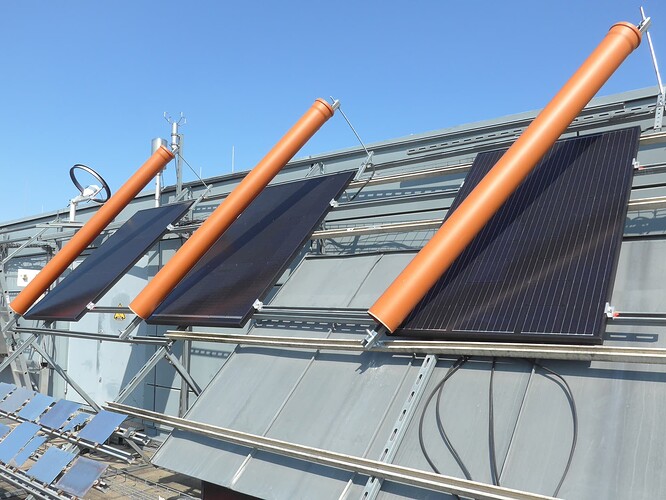Hello, I hope you are doing well.
I am using VI-Suite add-on of Radiance for Blender in order to perform irradiance simulations on each individual cells of different module types. There is an experimental setup consisting of 3 different solar modules with pipes over them as a shading object on the roof of Fraunhofer ISE where I work. All 3 modules are tilted by 45 degrees and were monitored. My main idea is to validate the electrical characteristics that I will get with the help of irradiance values from Radiance simulations using gendaylit against already real-life measured data.
My question is about input for gendaylit function. As the modules are tilted I have direct normal, diffuse horizontal, direct in plane and diffuse in plane irradiances. Which one of these would be accurate to use in gendaylit?
Thanks in advance.
Best Regards,
Chingiz Asadzade
Given that sunlight is most important in your application and gendaylit does not take direct measurements in arbitrary planes, the direct normal measurement seems most useful.
-Greg
Hello Mr. Ward, I hope you are doing well.
I am still working on my master’s thesis using gendaylit function of Radiance. After I get the irradiance results for each cell (assigned as a sensor) I use the data for I-V curve simulation. However, during early in the mornings, evenings (close to sunset) and cloudy sky when the DNI is very low, my results don’t match as they do during timesteps when the amount of DNI is significantly higher. I have look through the presentation on gendaylit from 13th radiance workshop and there is information about the possibility of poor work of gendaylit during sunrise and sunsets. Would you think that it is the case, if so what might be problem when there is a clody sky and DNI is low?
Thanks in advance.
Best Regards,
Chingiz Asadzade
Yes, I wouldn’t expect good performance feeding gendaylit DNI at sunrise and sunset. It might make sense to switch to global irradiance in morning/evening hours. You could analyze the accuracy of one versus the other measurement input at different times of day and cloud cover and decide based on that. This is really outside my personal experience, so I am really speculating. It would be great if someone who has done more with gendaylit in comparison to real conditions would offer advice.
Cheers,
-Greg
